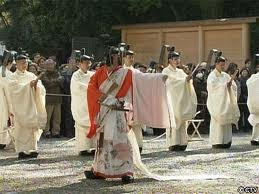:::::::::::::::::::::::::::::::::::::::::::::::::::::::::::::::::::::::::::::::::::::::::::::::::::
. Kigo Calendar - the 12 Months .
:::::::::::::::::::::::::::::::::::::::::::::::::::::::::::::::::::::::::::::::::::::::::::::::::::::
June - rokugatsu 六月

.................... 01 .................................................................................
. Memorial Day for Tokugawa Ieyasu 家康忌 .
. Yamabiraki 山開き Season opening on Mount Fuji .
. Changeing into summer robes 更衣 koromogae .
. Radio Day 電波の日 Electro-magnetic Waves Day .
. Madaraka Day - Kenya .
boosai yoohin tenken no hi 防災用品点検の日
day of general checkups for disaster goods
advocated by disaster and catastrophy adviser
山村武彦 Yamamura Takehiko.
Not only on the Day of the Great Kanto Earthquake (September 01), but four times a year, including the first day of March, June and December.
.................... 05 .................................................................................
kankyoo no hi 環境の日 World Environment Day
1999 Our Earth – Our Future – Just Save It!
- source : wikipedia -
.................... 06 .................................................................................
. Beginning of the Rainy Season 梅雨入 tsuyuiri .
sometimes dated to June 11.
.................... 07 .................................................................................
. Shinagawa Festival 品川祭 .
.................... 10 .................................................................................
. Anniversary of Time 時の記念日 .
.................... 13 .................................................................................
. Dazai Osamu Memorial Day 太宰治 / 桜桃忌 .
.................... 14 .................................................................................
. Sapporo Summer Festival 札幌祭 .
.................... 15 .................................................................................
. Memorial Day for Minamoto Yoshitsune 義経忌 .
.................... 20 .................................................................................
. Memorial Day for Ogata Korin 光琳忌 .
.................... 03 .................................................................................
. Martyrs’ Day - Uganda .
.................... 04 .................................................................................
. Memorial Day for Dengyo Daishi Saicho 最澄忌 .
.................... 06 .................................................................................
. booshu 芒種 Boshu, "grain in ear" .
one of the 24 solar sections 二十四節気
. Memorial Day for Priest Ganjin 鑑真忌 .
.................... 09 .................................................................................
. Charles Dickens Memorial Day - England .
.................... 12 .................................................................................
. Independence Day - Philippines .
.................... 15 .................................................................................
. Memorial Day for Kitamura Kigin 季吟忌 .
He was the haiku teacher of Matsuo Basho.
.................... 16 .................................................................................
. Day of the African Child .
.................... 21 .................................................................................
. geshi 夏至 summer solstice .
one of the 24 solar sections 二十四節気
. World Music Day .
.................... 23 .................................................................................
. Golowan Festival - England .
.................... 30 .................................................................................
. Summer Purification Ceremony 夏祓 .
June Purification Ritual, minazuki harai, harae 六月祓
.................... first Sunday
. Uesutonsai ウェストン祭 Weston Festival .
Reverend Walter Weston (1861~1940) at Kamikochi
.................... second Sunday
. Father's Day 父の日 Chichi no Hi, Vatertag .
.................... end of June
. Wimbledon Tennis Tournament - England .
.................................................................................
. WKD : June - a Haiku Month .
:::::::::::::::::::::::::::::::::::::::::::::::::::::::::::::::::::::::::::::::::::::::::::::::::::::
. WKD : World Days in June .
. Ceremonies, festivals, rituals - June .
. Memorial Days of Famous People - June .
:::::::::::::::::::::::::::::::::::::::::::::::::::::::::::::::::::::::::::::::::::::::::::::::::::::
For the worldwide approach to kigo,
we must differentiate between the "Haiku Season" and the natural phenomenon and human activites occuring at a certain season at a certain place.
To complicate our endeavor, we also have to deal with the Asian Lunar Calendar and the 24 seasons (periods), which were applied in Japan before the introduction of the Western Calendar, when kigo were already used in Japanese poetry.
Study the details here, please:
. The Japanese Haiku Calendar.
. Seasons beginning .
. Seasons ending .
:::::::::::::::::::::::::::::::::::::::::::::::::::::::::::::::::::::::::::::::::::::::::::::::::::::
. WKD : the complete SAIJIKI list .
.................................................................................
BACK : Top of this Saijiki
[ . BACK to DARUMA MUSEUM TOP . ]
[ . BACK to WORLDKIGO . TOP . ]
:::::::::::::::::::::::::::::::::::::::::::::::::::::::::::::::::::::::::::::::::::::::::::::::::::::





































